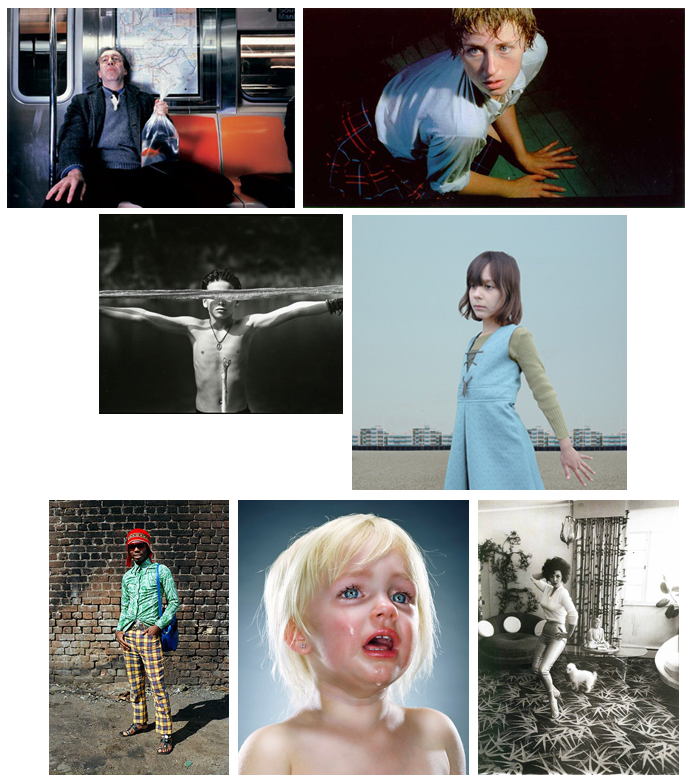Assignment 3 / People in Context
For this assignment, you are to take photos of people in an environment which tells us something about the person you are photographing.
Turn in:
4 final images, print and mount 2
lastname_a3-1.tif
lastname_a3-2.tif
lastname_a3-3.tif
lastname_a3-4.tif
lastname_a3-contact-sheet-1.tif, lastname_a3-contact-sheet-2.tif (2 columns, 5 rows, at least 2 sheets)
(Shoot at least 20 images. that means 5 for each subject. I recommend shooting more than that)
CONSIDERATIONS:
How is your subject lit? Are you using natural or artificial light? Direct or diffused light?
Are your colors muted or saturated? Are colors in your frame playing a role?
Are there patterns, lines, shadows, shapes in your frame? Are you working with negative space?
Is your subject posing, smiling, expressionless? Are they in their "natural" environment? Do they have props?
What about your framing? Are you using only their face, or cropping from their head down to their waist, or are you choosing to show their entire body? Are they sitting, standing, laying down? Are they facing us?
What else is in the frame?
Are you staging the shot, or allowing chance to fall into the frame? Are you trying to capture who this person is, or are you using them for another agenda (are you telling a fictional story)?
Are your portraits "stand-alones" or are they part of a series?
How do you shoot people if you aren't used to it?
Some photographyers are very comfortable shooting people. And some aren't. Some would prefer shooting landscapes, architecture or objects and avoid engaging with people.
So how do you create a more relaxed environment for you and your subject?
I recommend talking with your subject first. Don't even think about your camera. Just get to know the person you are going to shoot. If you already know them, talk to them about their day. Then, move on to setting up the shot and taking the images.
Some photographers are just not interested in engaging with people. In those cases, I recommend having an assistant. The assistant can be the one who engages with your subject. That frees the photographer up to handle the set-up and the camera. OR you can reverse those roles. You engage, where the assistant (if they are skilled) can handle the set-up and then you jump behind the camera. The scenario can play out any number of ways.
At the end of the day, you are dealing with people and how you treat them will effect the kind of shot you get.
Street Photography:
Some other photographers instead capture people in the moment and would rather be the fly on the wall or be an observer. You may choose to go this route, but the purpose of this assignment is to give your viewer more information about the person that you are photographing - so keep that in mind.
TECHNICAL SPECIFICS:
You will want to consider your focal length and aperture.
Some recommend a long focal length and a wide aperture.
How and where you shoot your subject will also influence your camera setting decisions.
Avoid cropping your subject at joints. Be aware of your framing at all times.
Run ALL of your final images through the digital and print workflow.
LINKS:
Model Release Forms (this is a useful form, though not required for this assignment)
Video:
Diane Arbus - Masters of Photography (1972)
Dorthea Lange - PBS American Masters
William Klein - The Many Lives of (2012)
Cindy Sherman - ART21 / "Characters"
(2011)
ARTISTS:
Philip-Lorca diCorcia "Hustlers"
Floriane De Lassee "How Much Can You Carry"
Past Students:
Julie Grace Immink

Artists shown above in order from left to right:
Philip-Lorca diCorcia
Cindy Sherman
Sally Mann
Loretta Lux
Lolo Veleko
Jill Greenberg
Diane Arbus